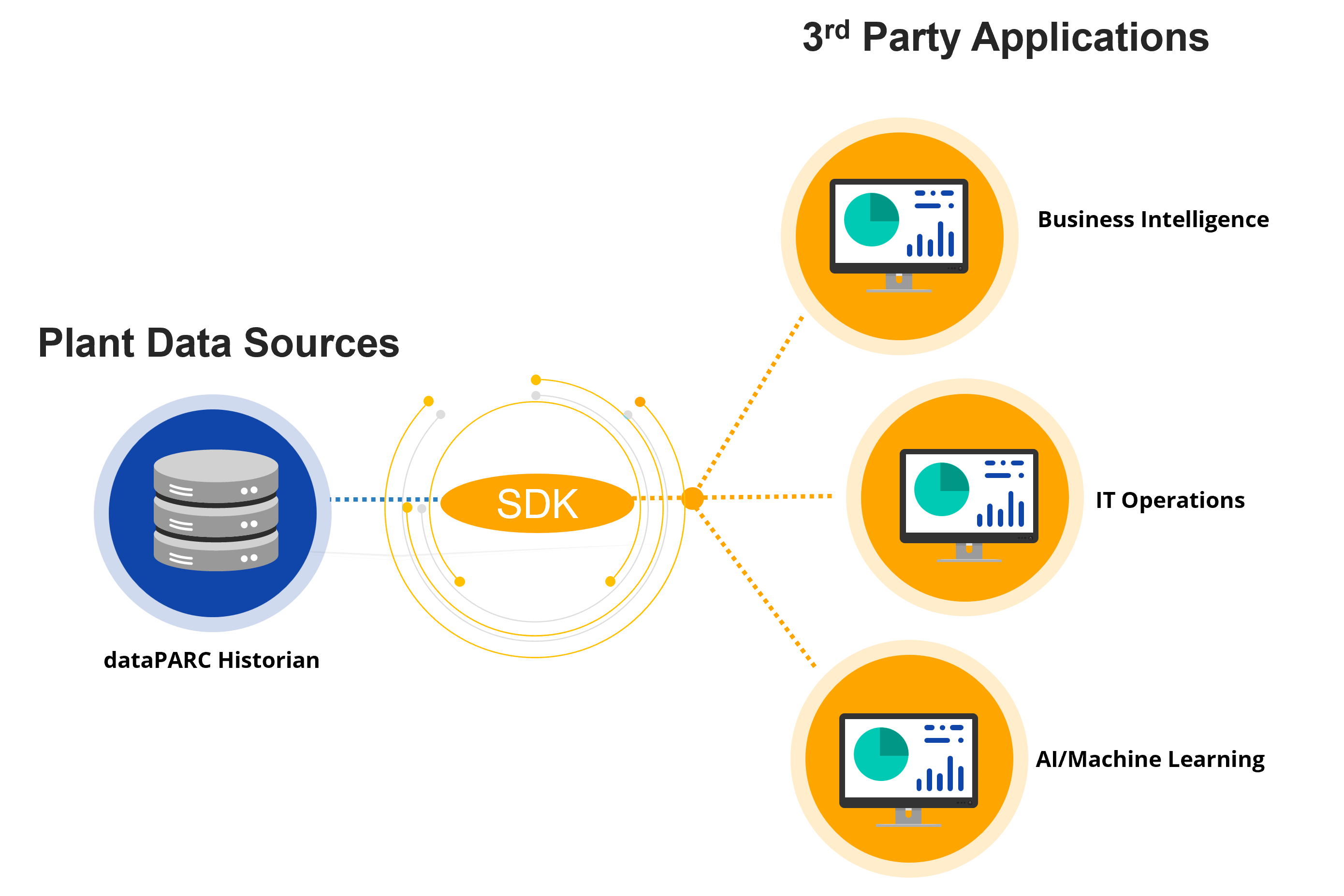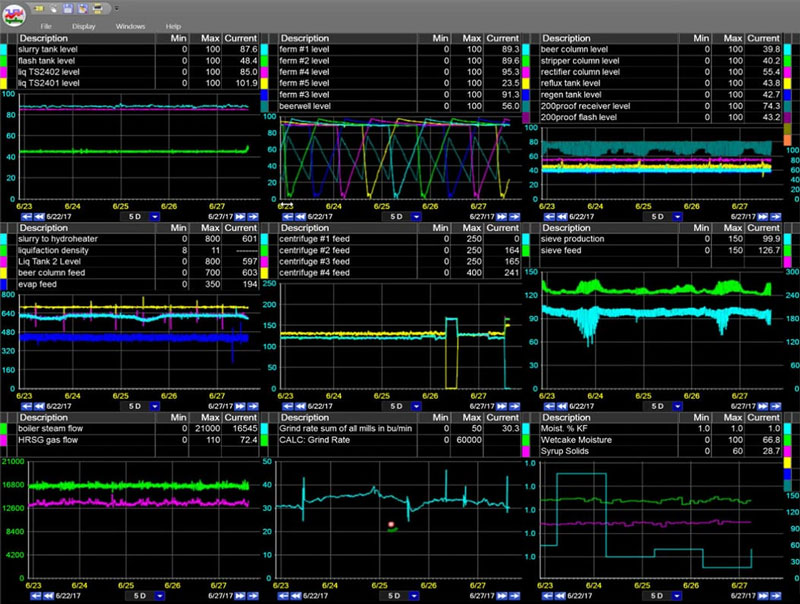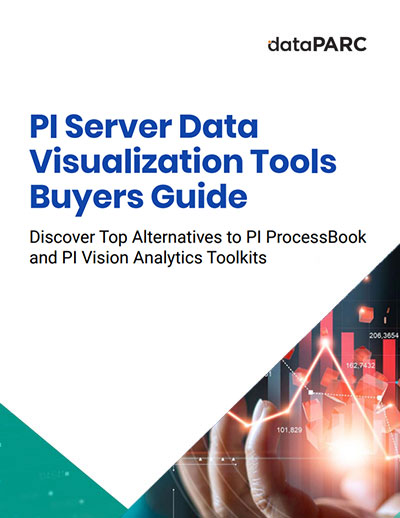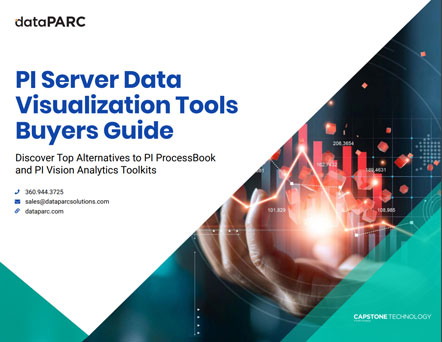Not all historians are created equal. Throughout this article, we will explore what to look for when choosing a historian for third-party integration. Characteristics include an easy-to-use SDK, ease of configuration, scalability, and company size.
Finding the Right Historian for Third-Party Integration
Historians play a critical role in capturing and storing vast amounts of time-series data. Third-party applications connect to historians to offer robust analytics and visualization tools that help users gain deeper insights into their data.
Choosing the right historian and establishing a partnership with its company can be advantageous for an organization and its clients. It’s crucial to find a dependable, speedy, and user-friendly historian that meets your needs. This is particularly important when dealing with complex industrial processes or systems that produce significant amounts of data. By selecting a go-to data historian, a company can streamline implementations, focus on their application, and expand their business.
Partnering with a historian company can reduce integration and implementation time and effort as the companies work together. Using the same historian ensures consistency in data collection and storage, leading to better support and faster issue resolution. In short, partnering with a reliable historian company can have significant benefits for your organization and its clients.
Historian Characteristics for Third-Party Integration
With a wide variety of historians available in the market, it can be overwhelming to determine which is the best fit for your application. To ensure that you make an informed decision, it’s important to take the following factors into consideration.
Easy-to-use SDK
The SDK (software development kit) that comes with the historian should be easy to understand and use. The SDK will enable third-party applications to interact with the historian and access its data.

A straightforward and user-friendly SDK will help speed up development time, reducing the time it takes to integrate the historian into third-party applications. The simpler the SDK is, the quicker developers can get up to speed, and the faster they can create integrations that provide value to the organization.
By selecting a historian with an intuitive and straightforward SDK, companies can reduce development time, and support costs.
Ease of Configuration
Another important factor to consider when looking for historians is the ease of configuration. Companies need to ensure that the historian they choose has a user-friendly interface and configuration process.
A historian with a simple and straightforward configuration process can save time and effort throughout the lifetime of the application, from installation to deployment and maintenance. Companies should look for historians that have easy configuration of data sources, tags, and other critical parameters.
An easy configuration process reduces the chances of errors or misconfiguration, which can lead to data loss, data corruption, or data discrepancies. This is particularly important in mission-critical applications, where any error or downtime can result in significant losses for the company.
Companies should prioritize historians with a user-friendly configuration process to save time, reduce the chances of errors, and get the most out of their investment.
Scalability and Performance
Scalability and performance are crucial factors to consider. As businesses grow and generate more data, they need a historian that can handle their expanding needs without sacrificing performance.
The ability to scale is vital, ensuring the historian can grow with the company and support its data demands. A scalable historian can handle the growth in the volume, velocity, and variety of generated data and provide the flexibility to add more resources as needed.

Performance is equally important as it impacts the speed and responsiveness of the historian. The historian should be able to store and retrieve data quickly, even with large volumes of data. Additionally, it should have efficient query mechanisms that allow for fast and accurate data retrieval.
The ability of a historian to scale and perform well ultimately impacts the user experience of third-party applications that integrate with it. Slow or unresponsive historians can lead to frustrating user experiences, which can negatively impact the reputation of the third-party application and the company it serves.
Company Size
When considering partnering with a historian company for 3rd party integration, the size of the company matters. This is because the size of the historian company can impact their resources, capabilities, and ability to handle your company’s needs.
For example, a smaller historian company may have limited resources and may not be able to provide the same level of support or customizations as a larger company. Smaller historian companies may not have the capacity to provide round-the-clock support.

A company that is too large may have many different products, not focusing on their historian as a priority. This means they may not be open to or receptive to your company’s needs or suggestions when it comes to making changes to the historian.
Finding a company that is just the right size—not too small to be overwhelmed by requests, nor too large to ignore them completely. It is a partnership after all, you should work together to ensure the product is working well for you and your customers.
Continuous Improvement and Adaptability
Tying into company size, continuous improvement, and adaptability are also important. The historian needs to be able to change and get better over time as technology and business needs change.
An adaptable historian is able to work with a wide variety of third-party systems, including modern technology and older systems. It is essential for the historian to be able to adapt to new use cases and provide the necessary functionality to accommodate shifting requirements as businesses develop and change.
Cost
Cost is a key factor to consider. It’s important to have a clear understanding of the pricing model, including any upfront costs, ongoing subscription fees, and additional charges for features or services.
While it may be tempting to choose the cheapest option, it’s important to balance cost with the factors reviewed earlier.
Be sure to evaluate the total cost of ownership (TCO). While one historian may have a lower upfront cost, it may require more resources for maintenance and support, leading to a higher TCO in the long run. On the other hand, a more expensive historian may require less maintenance and support, resulting in a lower TCO over time.
Choosing the Right Historian for Third-Party Integration: Final Thoughts
In summary, when considering a historian for third-party integration, there are several factors to consider. The historian should have an easy-to-use SDK and configuration process to simplify integration. Scalability and performance are important factors to ensure that the historian can handle the volume of data being collected and provide timely access to that data.
The company size, experience, and adaptability are also factors to consider, ensuring that the historian has the resources and expertise to handle the integration effectively and adapt for long-term success.
Ultimately, cost is an important factor to consider, but it should not be the only deciding factor. By considering all these factors, companies can select a historian partner that will meet their needs for third-party integration and provide value for years to come.










